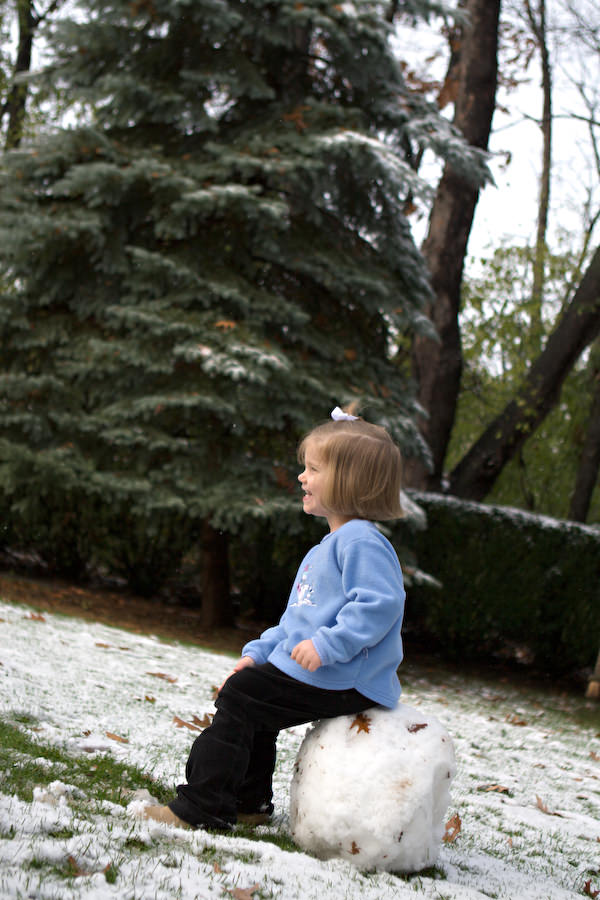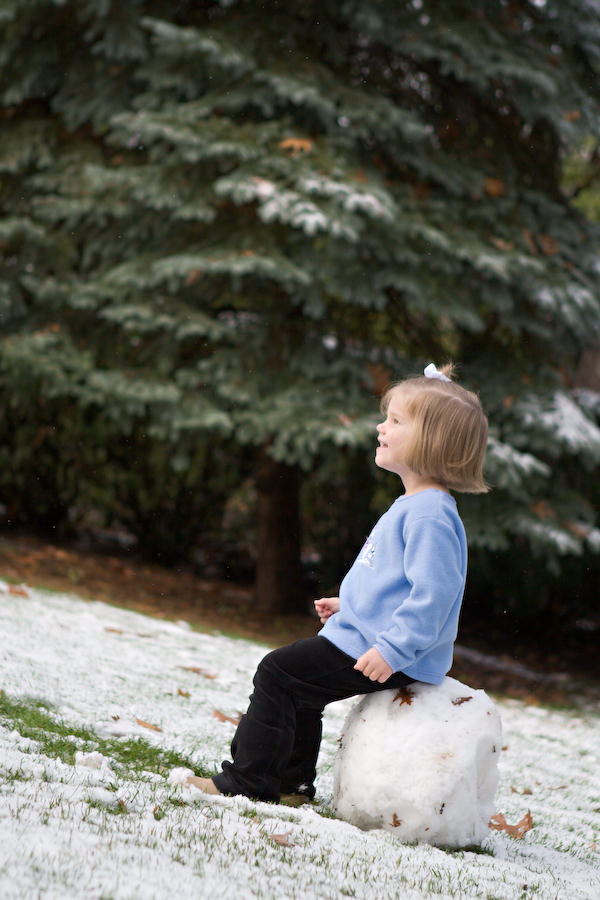Zoom: It's about more than getting closer.
December 11, 2007 | by Rachel
These pictures of my niece, Jordan, are a great example of a photography tip that I've wanted to post. It's an important concept in photography that most people are not aware of. It's the idea that zoom has more to do with composition than it does with where the photographers feet are.
Most people associate focal length (a.k.a zoom) with how close they have to be to their subject to get a decent shot. Although that is one function of focal length, I wouldn't say that it isn't the most important to me. I use focal length to set the mode of the image more than I ever use it to make my subject bigger. I'll explain.
There are 2 directions that you can go with your camera. You can zoom wide or far. I'll use these terms because they are less confusing that "in " and "out." Wide shots are easy to conceptualize. Most people know what an image from a fish eye lens looks like or the look of someone's face through a spyhole in a door. Those are extreme examples of wide images. Wide shots include larger sections of the room that you are photographing. Wide shots also make items in the room look farther away from each other than they truly are. The "OBJECTS IN MIRROR ARE CLOSER THAN THEY APPEAR" warning is an example of this. Think about looking through a spyhole in a door. Doesn't their nose look really big and close and their feet about a mile away. That's the distortion of a wide focal length.
Far is the other option. That is a little more difficult to describe. It is best to think of it as the opposite of a wide angle. Zooming far makes the objects in the image look flat and closer together. All focal lengths have their place in creative photography, but my suggestion is that most non-professionals could benefit from zooming far more. Instead of just picking up the camera and taking a picture, try picking up the camera, zooming it as far as it can go and then taking the picture. In other words, step back with your feet and get closer with your camera.
Here are 2 images that I took over Thanksgiving. I took the first image f Jordan but I didn't like it; the background was too cluttery. So I stood up, walked about 10 steps farther from Jordan and zoomed farther with my camera. Jordan stayed roughly the same size, but the tree behind her appeared to have gotten a lot closer to her. You too can move large trees in 10 easy steps!
Look what happens to the tree behind Jordan.
In summary, wide images tend to feel less focused and can easily be busy. Far images tend to isolate the subject more and make faces look more pleasing. If you want to understand this more try this.
Find a doll or a very still model. Kids are too wiggly. You are going to take 2 pictures of the doll. First zoom your camera as wide as it can go. For the first picture put the dolls nose in the middle of the picture and fill most of the picture with it's face. For the second image zoom your camera as far as it can go. Again put the dolls nose in the middle of the picture and walk away from the doll until it's face is roughly the same size as it was in the first picture. Try it. You'll easily see the effects of focal length on a face.


5 Comments
wow!
ok, so can you do this with a point & shoot or do you have to have a fancy camera for it?
btw, cute pics of my girl! i didn't remember seeing those ones. :)
Focal length (zoom) works the same with point and shoot cameras as it does on SLRs.
She is cute isn't she.
I can almost get a handle on what you're saying...much like your husbands sermons, just when I think I've got it, it becomes more obscure. When are you going to offer some beginner classes?????
[...] the flash will look much better and the effect of focal length (zoom) will be much nicer. See this post about focal length for an explanation of [...]